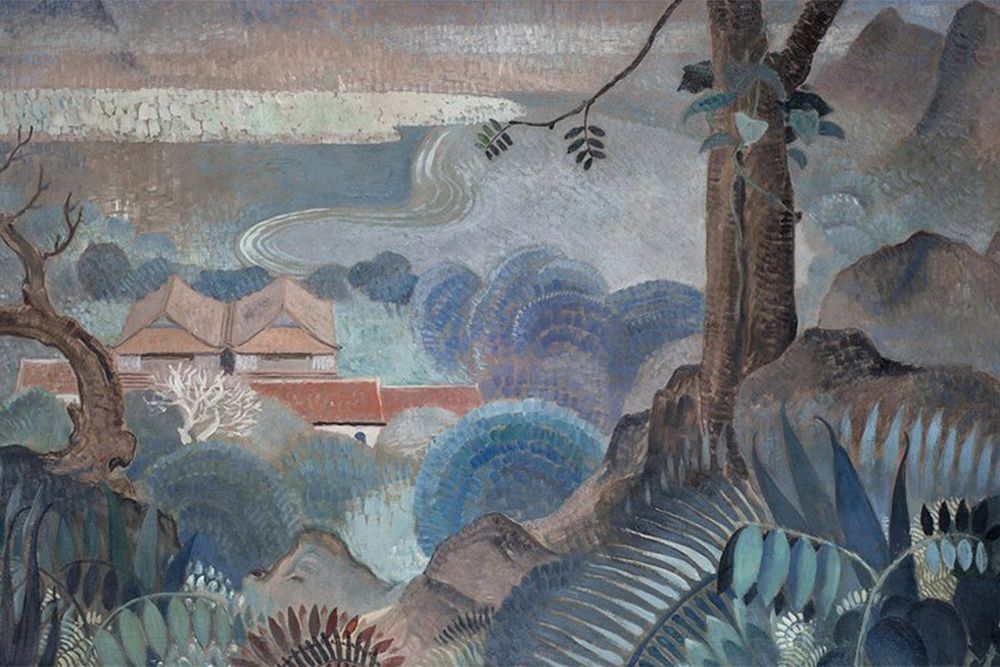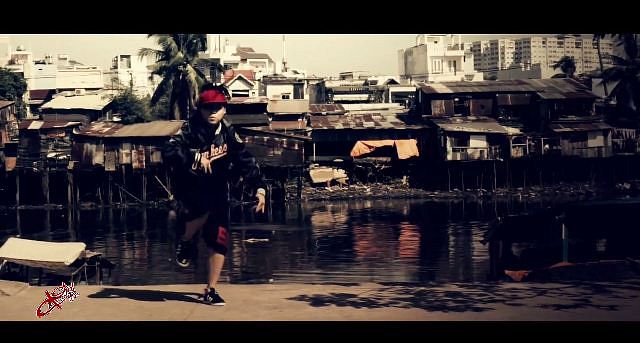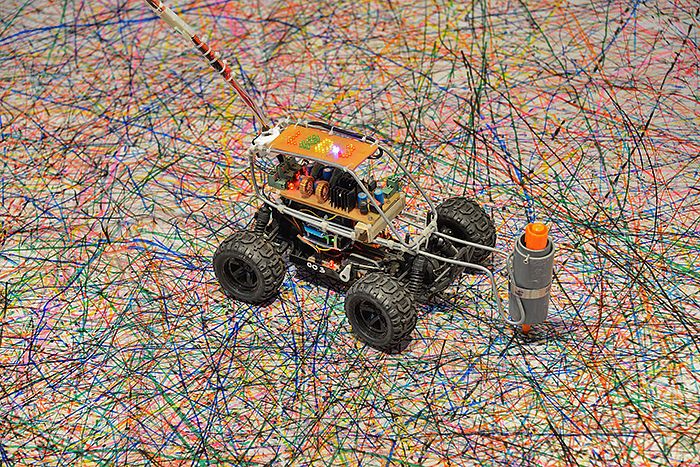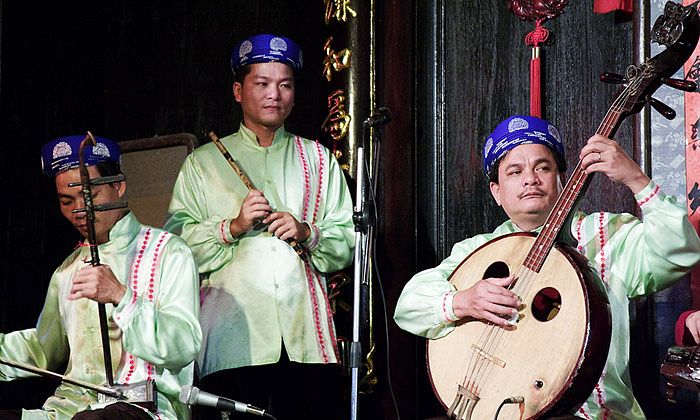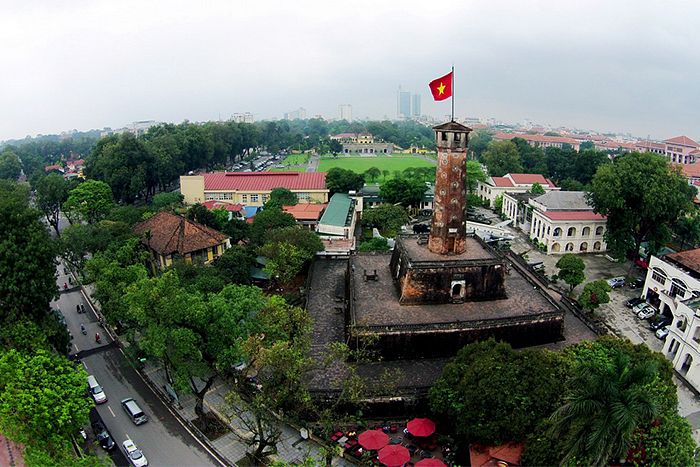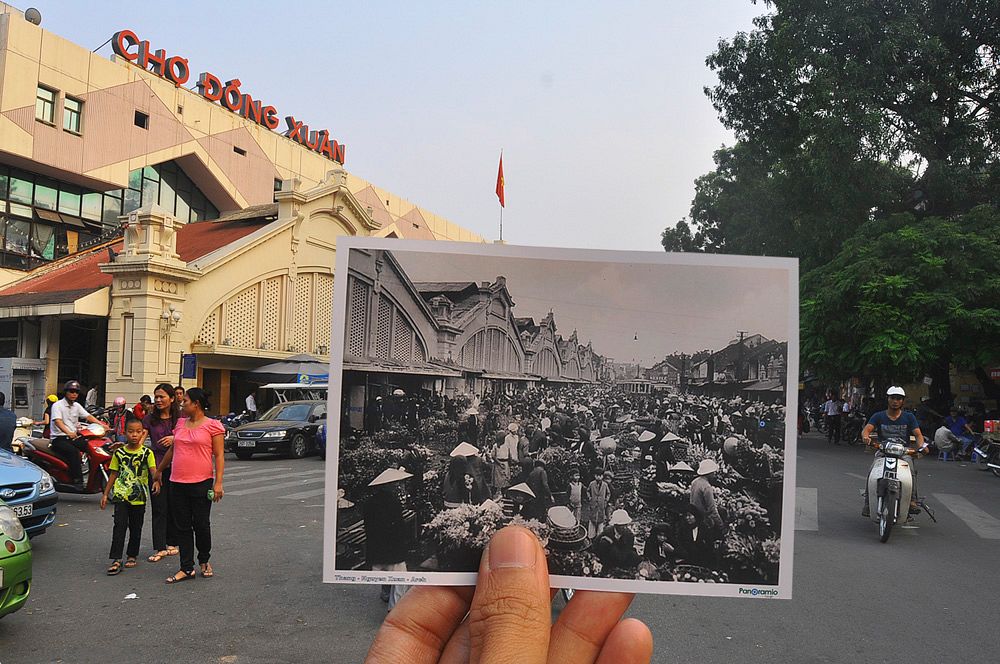Vietnamese American artist and music composer, Dan Nguyen has left yet another mark on the South East Asian art scene; this time, at the rapidly growing 3A Alternative Art Area.
You’ve likely already seen Dan’s work around, because he gets around. Dozens of walls from New York to Panama bear the characteristically black, white, and color splashed figures that linger in his wake.
Many of his pieces are a testament to the Vietnamese encounter with modernity-- sharp black lines that trace conical hats, or the occasional Hmong woman, standing against a expansive vacuum of blinding white, like a portal gazing on the city’s streets as the people hustle past. His latest work in the Alternative Art Area (3A Station) is not an exception, and, I would say, is more significant then is immediately apprehensible. ‘Significant’ here should be understood in both of the word’s meanings: not only is it noteworthy, but also symbolic.

Dan Nguyen’s piece guards one of the alleyways in the compound. It’s upon the wall of the building that houses all the electrical components, a building that is critical in its position vis-à-vis the others, a building that’s primary, a building that acts as a node in the compounds activities. The wall bears the face of a Vietnamese woman. She is beautiful, but not coquettish. She is pure, but not virginal. She is, in a word, resolute: not severe enough to be stern, but not soft enough to be complacent.
This portrait is the latest coat of paint on an edifice that has silently witnessed some of the most significant events in the tumultuous history of our beloved city. Before 1954, the whole area surrounding what is now the bend in Tôn Đức Thắng Street was home to the French Naval Arsenal. According to Mai (the brains behind 3A), the very buildings that make up the Alternative Art Area were the home of the Bureaux Deux de Services, the French analogue to the CIA.
After France was expelled from the country, the US moved in and aided in organizing the notorious South Vietnamese Intelligence Organization (CIO). Tim Doling, who was gracious enough to provide me with much of this information, reports that the CIA also may have maintained its own interrogation facility within the compound. Tim also relates Terzani’s report that the organization was secretly infiltrated by four revolutionary activists who would later capture the compound in a coordinated effort to preserve records during the 1975 fall of Sài Gòn. Mai further explained that, up until she began renting the space, the compound was home to the Tổng Cục II, the Socialist Republic of Vietnam’s intelligence agency.
We can see that noteworthiness of 3A has nothing to do with imposing architecture, sublime refinement, or an appeal to the exotic, strange, or the always kitschy ‘oriental’. At the time of this writing, the entrance to a number of the shops was under a few inches of muddy water, and the potholed road could be any other in the city. The real value of ‘3A’ is like the value of a subterranean mineral reserve, this is value in the form of potential, it’s value that’s only beginning to be unlocked.
This is not to imply that 3A was simply stumbled upon, Mai, the pioneer of the space, has already done tremendous work assembling the contributors and making the place suited for human habitation. At the turn of the century she was inspired by CAVE in Williamsburg, Brooklyn, and returned to transform what was a rotting, bat-infested husk of structures into a fitting venue for a hodge-podge of artwork.

In the more than ten years that 3A has been running silently under the radar, the Vietnamese art scene has exploded. All around the country, from DJs and graffiti artists to cooking, fashion and video games, a boiling energy has been bubbling through the seams of the once opaque monolith. The seemingly homogenous country, Vietnam, that country famous world wide as the site of a horrific past, was largely silent while the voice of American cinema told its stories to the world. Now, almost a few decades after Đổi Mới, the latent voices are bursting free in earnest.
However, like much of the development in Vietnam, or, more precisely, as is characteristic of development in general, these changes are variegated, dispersed, and haphazard. Prominent individuals, and the supportive communities that are always concealed by celebrity, have flourished where the soil is most fertile, leaving a constellation of bright points scattered across a vast ink-like sea of indifference.
This is where Mai places her intervention-- as a center of gravity. She wants, or rather needs, to weave these transformations into a common fabric, thereby multiplying their intensities and providing them with a forum. To Mai, and I completely agree with this sentiment, an art consuming public doesn’t simply preexist the artists themselves, they need to be molded and educated in a dialectical fashion, with each exchange fertilizing a matrix that will in turn birth more numerous and sophisticated artists. 3A aspires to becoming a pivotal space in this movement, and with the construction of Le Meridien hotel and a street connecting Nguyễn Siêu and Ngô Văn Năm almost complete, I would wager that it stands a good chance.

Without a doubt this collection of buildings has long been a reservoir for aspirations, some jilted and some fulfilled. To Dan, the electrical building is a fitting house for the Vietnamese spirit. The soul of a people that have seen so much in such a short time, a people that have continued through more than their fair share of adversity without becoming resentful or bitter. The woman is the embodiment of this spirit: persevering, constant, and relentless. For Mai, this spirit is channeled into rebirth and rejuvenation, a new purpose for old buildings, ‘renovating’- the literal meaning of the words “Đổi Mới”. And finally, to me, the coagulation of these signs spells an auspicious omen. The arc of history testifies to a certain justice, from the colonial French to a Brooklyn inspired art center, from a space of repression to one of creation. Even if one is in the habit of lamenting ‘westernization’, one can only celebrate 3A, a place where the strength of the people peeks through the layers of paint and glares knowingly from the very walls built to conceal, contain, and cancel.


